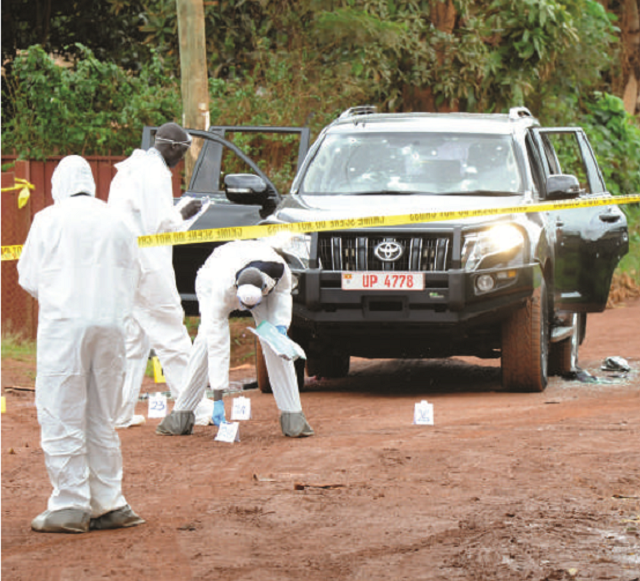
Nickson Agasiirwe, on the other hand, was the epitome of Kayihura’s policing strategy of, idiomatically speaking, sending a spy to catch a spy.
The strategy is said to have worked very well for another officer – Brig. Elly Kayanja- who, like Kayihura, faced a grim wave of crime. Kayanja introduced and headed the infamous Operation Wembley – a shoot to kill policy that is reputed to have ridden the city of gangs. It is said that to succeed, Kayanja either hired insiders within the gangs as informers or hired knowledgeable informants. When he was appointed in 2005, Kayihura adopted the same approach. He infiltrated downtown crime havens, boda boda taxi associations, and political youth groups and mined them for information and intelligence. That is how Agasiirwe reportedly came into the picture. Unlike many recruits, however, Agasiirwe rose through the ranks to become a top cop. He, however, reportedly maintained his informal structure and would spring them when required. Agasirwe has been named as in several cases in which police forces confessions out of suspects especially at the Nalufenya detention facility.
But, observers say, Kayihura, Baroza, and Agasiirwe and their other associates on the force forgot that informal structures are by nature opportunistic, up for hire, and can easily be infiltrated by other forces. Unlike conventional criminals and anti-government forces, however, members of informal structures gone rogue are more dangerous because they fight the organization from within. Like parasites, they are keen to maintain the status quo and acquire several powerful protectors.
A clear case of this happened on April 24 when Kayihura paraded what he claimed were members of gangs terrorising people in the Greater Masaka region and Mbarara. Kayihura paraded that at Katwe Police Station in the crime den of Kampala city because, he said, the gangs were in fact Kampala-based.
Kayihura said he was parading the suspects to give evidence that the police is not sleeping.
“We are on top of this situation and it shouldn’t scare you,” he said. Kayihura revealed that “the intelligence which is being developed” points to a possible “link between the criminality and some political actors who want to use general crime to create fear in the country”.
He articulated his theory, that Kaweesi was murdered as part of targeted assassination attacks on top, influential persons in Uganda to cause a sense of insecurity.
Then he invited the suspects, one by one, to reveal their crimes to journalists. But the press briefing soon turned farcical and the suspects instead appeared to link Kayihura’s men to the crimes.
One said he was part of the gang that attacked Lwengo on March 30, the time Kaweesi was buried there.
But suspect named Juma, more than any other, threw the entire event in disarray when he suggested that the “bosses” who employ them (gangs) to unleash the terror onto Ugandans always have policemen wearing khaki with their own patrol vehicles that guard them. Juma, also dropped names. He said that at one of the meetings police guarded, over 250 thugs gathered at Mt Zion hotel in Makerere to get orders from their commanders.
The commanders were identified as BK or Charles Bukenya and Senga. Apparently, the commanders also brought two vehicles full of machetes, pangas and huge hammers, which they have been using.
Sources say Bukenya, who is a businessman linked to the ruling NRM party, denies any links to gangs.
Sensing that they were losing control of the narrative, the police tried to clarify that Juma was possibly meaning security guards since some of them also wear khaki uniforms but it was rather late.
But Juma’s claims had clearly poured fuel onto the fire that the police chief has been trying to extinguish since March 19 when President Museveni while addressing mourners said criminals had infiltrated police.
 The Independent Uganda: You get the Truth we Pay the Price
The Independent Uganda: You get the Truth we Pay the Price



